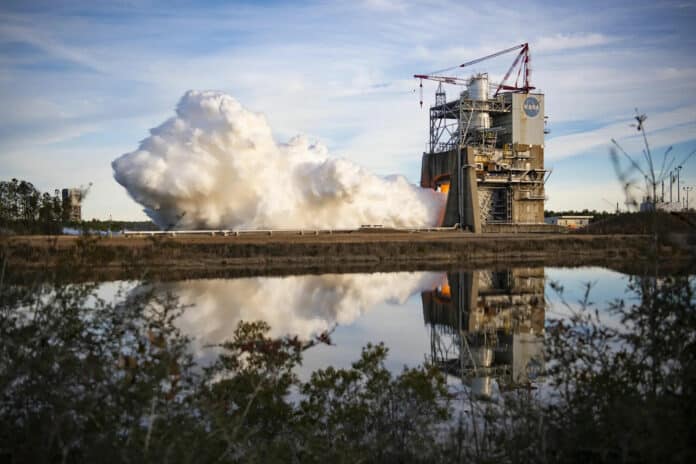NASA making progress in its efforts to prepare for future missions to the Moon and beyond. The recent full-duration hot fire test of the RS-25 engine on the Fred Haise Test Stand is a critical step in this process, as it will help certify the production of new engines for the Space Launch System rocket.
The data collected from this test series will be used to certify the production of new RS-25 engines by lead contractor Aerojet Rocketdyne, an L3Harris Technologies company, to help power the SLS rocket on future Artemis missions. These tests are laying the groundwork for humans to once again set foot on the Moon and explore beyond, beginning with Artemis V.
The teams are running some evaluations on a few new engine components, such as a nozzle, hydraulic actuators, flex ducts, and turbopumps. This is apparently the final series of tests, as they hope to certify the upgraded engines’ production soon. NASA already completed a 12-test certification series with the upgraded components last June.
During the recent January 17 test, the operators followed a “test as you fly” approach, where they fired the engine for almost eight-and-a-half minutes (500 seconds), which is the same amount of time required to launch SLS. They ran the engine at power levels between 80% to 113%.
The January 17 test is the latest in a series of tests that began in October. The previous tests involved firing the engine for durations between 500 to 650 seconds.
The longest planned test occurred on November 29 and lasted almost 11 minutes (650 seconds), where the engine was steered using a technique called gimbaling to control and stabilize SLS as it reached orbit. Each SLS flight requires four RS-25 engines to generate over 2 million pounds of thrust during launch and ascent.
The first four Artemis missions will be using modified space shuttle main engines that have been upgraded to provide additional thrust, up to 109% of their rated level. To further increase the power of these engines, newly produced RS-25 engines, capable of powering up to 111% level, will be used for upcoming missions.
The engines are being tested up to the 113% power level, which will provide an added margin of operational safety. With the completion of the test campaign in 2024, all systems are expected to be “go” for the production of 24 new RS-25 engines for upcoming missions, including Artemis V.
Through Artemis, NASA aims to establish a long-term presence on the Moon for scientific exploration with commercial and international partners, learn how to live and work in a different environment and prepare for future human expeditions to Mars.
